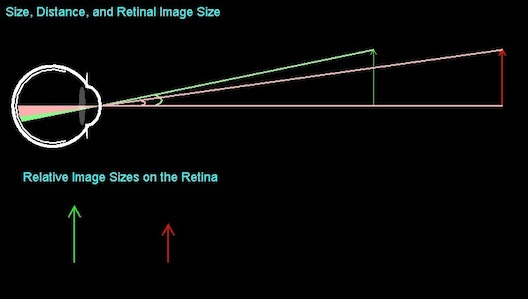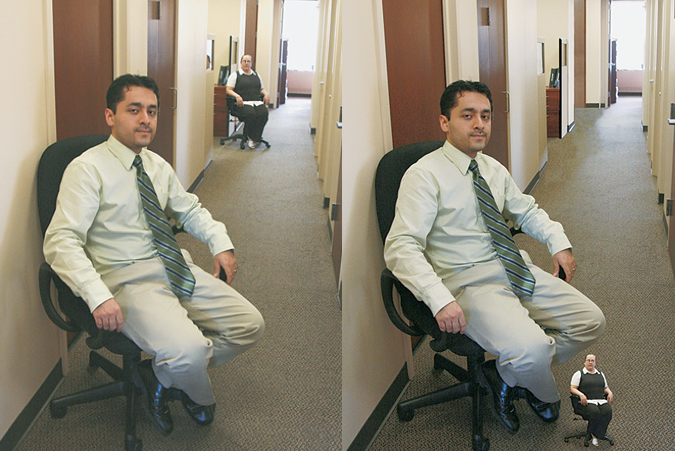Chapter 1. Size Constancy
1.1 Introduction
Size Constancy
One of the important perceptual skills is judging the size of an object. To take just one example, to pick up something (say, a rock or a coffee cup), you need to know how big the object is so that you can adjust your hand. In this task you will be asked to judge the relative size of two people to each other and then adjust them so that they look the same to you. It is important that you look at the objects closely. Don’t use a ruler or any other aid. This is a perceptual task: How big do these two figures appear relative to each other?
1.2 Experiment Setup

1.3 Instructions
Instructions
You will be asked to adjust the size of the figure on the right so that it appears to be exactly the same size as the figure on the left. When the figures look to be the same size, press the Match button to move to the next trial.
Keyboard Responses
| Key | What Response Means |
|---|---|
| + or = (same key) | Increase the size of the left figure |
| - (minus sign) | Decrease the size of the right figure |
1.4 Experiment
Begin Experiment

1.5 Results
Results

1.6 Debriefing
Debriefing
As an object gets farther away from us, the size of the image of that object on the retina shrinks. Take a look at the figure below.

The two arrows at the top of the figure are exactly the same size, but the more distant arrow will cast a smaller image on the retina, as indicated by the two arrows at the bottom of the figure (drawn to the relative sizes of their images on the retina).
If we saw the world in a way that depended upon the retinal image size, your friends would shrink rapidly as they walked away from you. Their height would halve with each doubling of distance. At 4 feet away, they would appear to be half the size of when they are just 2 feet away. Take a look at the following photograph.

Fortunately, this photograph does not illustrate the way we view the world. We have size constancy, which is the perception that objects stay about the same size despite their different distances from us and the different retinal images they cast. Our depth perception plays a critical role in size constancy. Holway and Boring (1941) did a classic experiment. In a long hallway they used clever means to reduce the depth cues as to how far a disc was away from the participant. As they removed depth cues, the size of the object depended more and more upon the retinal image size instead of the actual size of the object. With depth cues, we have size constancy; without depth cues, our situation is more like that in the photograph above. This illusion has a very practical application. In movies, one of the ways to create the illusion of tiny people is to control what depth cues are present. If you remove any depth cues, but make one person farther away, that person will appear smaller. Think of the hobbits in the Lord of the Rings movies.
Photo credit: The Photo Works
References:
Boring, E. G. (1964). Size constancy in a picture. The American Journal of Psychology, 77(3), 494-498.
Holway, A. H., & Boring, E. G. (1941). Determinants of apparent visual size with distance variant. The American Journal of Psychology, 54, 21-37.
1.7 Quiz
Quiz